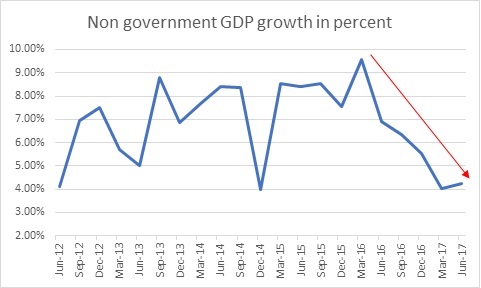Be positive.
My friends have told me to be positive.
My extended family has asked me to be positive.
Unknown people on the social media have suggested the same.
Because in their heads they feel that being positive will drive us out of the rut and all the troubles that we currently find ourselves in.
Of course, it’s not as simple as that. It never is.
Dear Reader, have you ever wondered why the be positive messages started going around on WhatsApp, Twitter, Instagram, LinkedIn and what not, last month, right in the middle of the worst phase of the second wave of the covid pandemic? People were dying. People were not getting oxygen, beds or medicines for that matter, and in the middle of all this man made chaos, friends and family, were sending WhatsApp messages promoting the idea of being positive.
Well, if you are like the people who have been asking me and others to be positive, you clearly didn’t think about it. This is simply because you were busy being positive and didn’t bother to figure out why this bullshit of being positive came up right when it did and not before or after.
The Nobel Prize winning psychologist Daniel Kahneman along with Olivier Sibony and Cass Sunstein, have got a possible answer for this in the book Noise—A Flaw in Human Judgement.
As they write:
“Sure enough, some people are more receptive than others to bullshit. They can be impressed by “seemingly impressive assertions that are presented as true and meaningful but are actually vacuous.””
The word vacuous means empty or mindless. From religious gurus to corporate gurus to religious gurus morphing as corporate gurus (yes there is a category like that as well), follow this formula with great success. Doing this involves use of phrases and sentences which sound profound when heard, but mean nothing, if you sit and think about it.
As Kahneman, Sibony and Sunstein write:
“Gordon Pennycook and colleagues have conducted many studies of people’s reactions to meaningless, pseudo-profound statements generated by assembling randomly selected nouns and verbs from the sayings of popular gurus into grammatically correct sentences, such as “Wholeness quiets infinite phenomena” or “Hidden meaning transforms unparalleled abstract beauty.” The propensity to agree with such statements is a trait known as bullshit receptivity.”
In order to make the population at large receptive of bullshit, it is important that they are in a good mood. While doing this would have been very difficult earlier, now with cheap internet and rock-bottom mobile phone rates, and many smart phones going around, people can be bombarded endlessly with messages of being positive. It doesn’t cost anything except a few message writers, who are available dime a dozen.
As the authors point out:
“Inducing good moods makes people more receptive to bullshit and more gullible in general; they are less apt to detect deception or identify misleading information.”
And this is where the entire idea of being positive which has been promoted so extensively over the last one month, comes in.
The idea is to make sure that people are in a good mood and hence, more receptive to misleading explanations around why there is shortage of vaccines, why the government was caught totally unprepared for the second wave and why the government is not be blamed for all this. And it needs to be given the benefit of doubt.
Recently I was told by someone that the vaccine shortage is primarily because of journalists (yes, journalists). They wrote columns questioning the efficacy of the vaccines. This led to a situation where many people did not vaccinate between January and March, before the second wave broke out, as they thought the vaccines are not safe.
Given that enough people were not getting themselves vaccinated, the government ended up exporting six crore doses. Hence, now there is a shortage, and the government can’t be blamed for it, because journalists questioned vaccine efficacy. This is one argument going around among the be positive crowd.
There are many ways of puncturing this argument but let me use the simplest one. The current government has no interest in listening to journalists or anyone else who does not conform to their way of things. So why would they listen to them on just this issue? The more important question is why the government did not bother to order enough vaccines in advance, like governments of so many countries did.
The government didn’t do this simply because it got caught in its own rhetoric of India having successfully beaten the covid pandemic. The trouble with government propaganda is that sometimes the governments end up believing in it and the citizens have to bear its cost, which they currently clearly are, though many of them are busy being positive.
It is important to keep in mind what Carl Bergstrom and Jevin West write in Calling Bullshit – The Art of Scepticism in a Data Driven World:
“Human language is immensely expressive, in the sense that we can combine words in a vast number of ways to convey different ideas… This is a good skill to have when trying to communicate efficiently—and it’s equally useful when using communication to manipulate another person’s beliefs or actions. That’s the thing about communication. It’s a two-edged sword.”
The entire be positive campaign (can’t think of a better word to describe it), is what the American philosopher Harry Frankfurt called a deliberate misrepresentation in his book On Bullshit. And this deliberate misrepresentation has been carried out to ensure that there are no scratches on the teflon coating surrounding the government.
To conclude, be positive in 2021 is basically what acche din aane waale hain was in 2014. They are two sides of the same coin. They were both designed to mislead.





